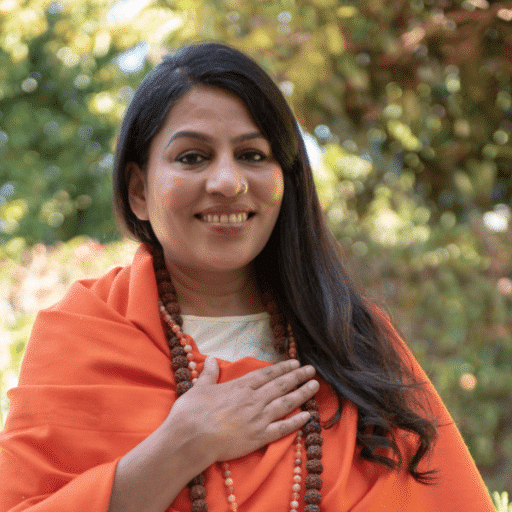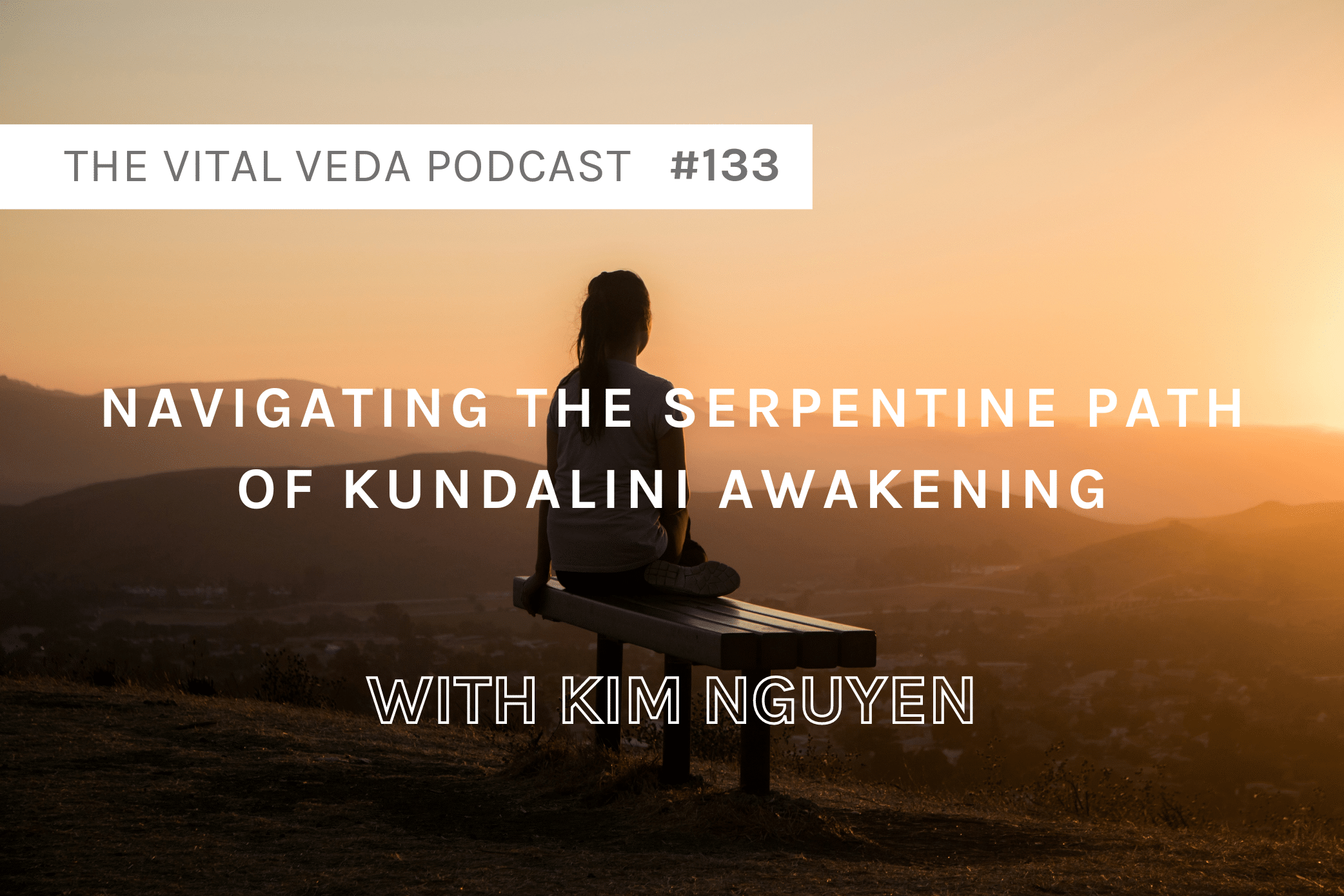In the Vedic calendar there are a few special festivals where the collective invokes the Mother Divine aspects of consciousness which are also supported by the astrology active at that time.
This very special celebration and cycle is called Navaratri: The 9 Nights of Mother Divine, and although it happens a few times a year along with the equinoxes and solstices, the most important one (called Maha Navaratri or Great Navaratri), is around the corner.
Understanding the importance and meaning behind this celebration connects one closer to Nature’s powerful and rejuvenating cycles that are specifically intricately linked with our biological rhythms and energies. In addition, it an opportunity to harness the Divine dynamic energies (Shakti) that are especially accessible at this time.
In this episode I got the pleasure to sit down with Acharya Shunya, a Vedic scholar and wisdom teacher who gracefully broke down the deep meaning that underlines the auspicious times we call Navaratri, as well as recommended practices for you to perform during this time.
ABOUT OUR GUEST: ACHARYA SHUNYA
Acharya Shunya is a wisdom teacher and a catalyst for empowering health and elevating consciousness worldwide.
She is an award-winning and internationally renowned author, speaker and scholar of non-dual wisdom (Advaita) and a classically-trained master of Yoga and Ayurveda.
The first female head of her 2,000-year-old Indian Vedic spiritual lineage, Acharya Shunya provides a rare opportunity to receive authentic teachings.
Acharya Shunya is the President of The Awakened Self Foundation with its international headquarters in California and founder of the spiritual and philanthropic non-profit Vedika Global.

She hosts the Shadow to Self podcast, the Alchemy with Ayurveda program, author of best-selling book Ayurveda Lifestyle Wisdom: A Complete Prescription to Optimize Your Health, Prevent Disease, Live with Vitality and Joy (Sounds True, 2017).
Author of Sovereign Self: Claim your Inner Joy and Freedom with the Empowering Wisdom of the Vedas, Upanishads and Bhagavad Gita and Her third book, slated for release in January 2022, Roar Like a Goddess: Every Woman’s Guide to Unapologetic Power, Propensity and Purpose.
Table of Contents
The Acharya’s Dinācarya (Daily Routine) During Navaratri
Since this is such a special time of the year, it is very important for the dinacharya to also be special.
She starts by cleaning her altar and purifying the energies in her home. This is very important – we will be inviting the Goddess to our home.
It’s very important to wake up in the brahma muhurta and meditate (3 hours before sunrise), in order to properly establish one’s self in Being during these hours of pure transcendence and creation.
Learn more about the brahma muhurta here
Then performing the regular dinacharya (abhyanga, nasya, gandusha, snana & can add surya tarpana).
Start cooking the sattvic food that she will be eating for lunch. Different regions in India recommend different types of food for Navratri.
In Ayodhya (the city from which Acharya Shunya comes), they cook root vegetables, have dairy, but avoid grains during the 9 days/nights.
Lighting ghee lamps:
The fire in the lamp is the embodiment of the Divine Shakti that kindles all of creation. So we’re inviting that Sakthi into our lives by lighting up lamps.
The light that comes from the ghee lamp also serves as an invitation for the light (wisdom or vidya) of the Mother to enter our lives.
The ghee that is used to light the lamp along with the fire produce by it, are also offerings to the Divine.
Japa practice:
First three days Durga mantras
Second three days Lakshmi mantras
Last three days Saraswati mantras
Why Does Navaratri Consist Of 9 “Nights”?
Just like the day & the sun are related with the Divine Masculine, the night & the moon are related to the divine feminine.
The night is when the light becomes very deem and our fears & anxieties become heightened.
It is the perfect time to accept the invitation of worshiping the Divine Mother, so that we may conquer those fears and uncertainties with devotion.
If we draw all of our attention to Her, that divine & all-pervading sakthi force will move through us and take us in whatever direction we need to go.
What Are We Celebrating During Navaratri?
Out of the many things needed in one’s life, the three most important things are Wisdom, Prosperity and Strenth (which includes physical health and inner positive stregth & courage).
All these must bee in the right balance, if there is an imbalance then that will become manifest in a negative way in our lives.
E.g. If someone has wealth and strength, by no wisdom, they will utilise the two to create bad karma. If someone has wisdom and prosperity but no strength, they won’t be able to spawn anything into action. If someone has strength and wisdom but no prosperity, they won’t be able to create anything substantial and whatever they do will die out soon.
For this reason during Navratri we worship the Goddess as Durga (Strength), Lakshmi (Prosperity) & Saraswati (Wisdom).
The first three days we worship Durga, asking for her to remove all the ignorance and negative forces from our life. For the second three days we worship Lakshmi, to give us the wealth and prosperity needed to spawn into creation that which our soul desires. On the last three days we worship Saraswati, to ask for the wisdom to utilise the strength and prosperity in a proper way.
The Stories of The Maha Devis
Durga & Mahishasura
One of the most iconic events that are celebrated during Navaratri is the battle between Mahishasura, the boar-headed demon, and Durga Devi, the Goddess of courage and strength.
Mahishasura is the embodiment of Ego and all the negative forces in our life, even our negative thoughts. As well as the epitome of the tamas guna (trapped light).
Durga is the embodiment of pure sattva (the pure divine light of consciousness).
During their fight, Mahishasura constantly changes his form, trying to find a way to vanquish Durga, which represents how our Ego, the negative influences in our life and even our negative thoughts can and will unrelentently change their shape & form in the hopes of defeating the true light of our Selves.
It is by devotion to Divine, by enlivening that Durga consciousness within us, that we’re able to vanquish those ‘demons’ in our lives.
Lakshmi & Kolhasura
Lakshmi is the Goddess of prosperity, fertility, beauty & wealth.
Kolashura is a demon that represents darkness, depravity and the estrangement that comes from being out of alignment with the Divine – he is the embodiment of the self-abandonment and the relinquishment of the higher values of life
Lakshmi teaches us that by destroying the Kolashura in our lives, we can return to sense of self-love, self-esteem, self-respect, and harness the prosperity that comes from that.
Saraswati & Dhumralochan
Saraswati is the Goddess of wisdom and the Vedas, she is the wellspring of creation and spawns into life everything that brings about evolution.
Dhumralochan literally means “blurry perception”, so this demon embodies our incapacity to see things clearly, our delusions and illusions, that are rooted in a lack of vidya or proper wisdom.
The defeat of Dhumralochan represents our capacity to conquer that “blurry perception” by gaining true wisdom as to the nature of our Selves.
When we learn about the truths of who we truly are, and about the laws of nature (Veda); when we stop seing ourselves as just a body, as finite, and we stop compulsively engaging in material pursuits and sense-gratification; when we start to live in tune with those principles and truths – it is only then that our perception of the world is clear and we can perform righteous evolutionary action (dharma).
Other Practices To Do During Navaratri
Meditate under the moonlight using the beej mantra for each goddess, depending on the day of Navaratri (first tree days are for durga, second three are for Lakshmi, last three are for Saraswati).
Durga beej mantra: dum
Lakshmi beej mantra: shreem
Saraswati beej mantra: ayim
Have early, home-cooked, sattvic & light dinners, to avoid becoming tamasic and sleepy during the evenings.
Journal during the days of Navaratri
Write a letter to the Goddess
Mandala creation – you can do this holy art creation using edible seeds and other products that animals (like birds) would enjoy feasting uppon.
If you don’t have a murti (idol) of the Goddess, go for a walk on the first day of Navaratri and find a stable rock that you can bring home with you and establish it on your altar.
Make that rock the embodyment of the Goddess, and that way, through that rock the Divine Feminine will come.
Offer to that rock flowers, food, incense, essential oils, prayers, tears, joy, and everything that you want to offer the Goddess.
On the last day of Navaratri, which is called Vijaya Dashami or “Victory Day”, thank that rock for visiting your home and return it to the place from where you took it.
Victory Day or Vijaya Dashami
If we utilise the strength (Durga consciousness) and wealth (Lakshmi consciousness) bestowed by the Goddess in a proper way, through the lens of wisdom (Saraswati consciousness), we will get victory on the tenth day of Navaratri.
That’s why we celebrate the tenth day of Navaratri as Vijaya Dashami (Victory day).
Victory Day is also believed to be the day in which Mahishasura was defeated by Durga, and the day in which the demon Ravana was defeated by Lord Rama.
20 days after Vijaya Dashami we celebrate Dipavali, the festival of the row of lights.
This is the day in which Lord Rama returned to his holy city of Ayodhya after defeating Ravana.
To learn moer about the meaning of Dipavali and the story of Lord Rama listen to Diwali: Spark Radiance & Supersede Limitations | Ācārya Shunya #071
RESOURCES
Roar like a Goddess: Every Woman’s Guide to Becoming Unapologetically Powerful, Prosperous, and Peaceful by Acharya Shunya
Acharya Shunya’s website
Acharya Shunya’s Instagram
Song: Hey Matri Devi by Bhakti Bhavam Ft. Maxiji
–
Related Content:
Podcast: Living the High Value of Life with Abundance & Affluence (Laksmi) + Guru Relationships | Yashoda Devi Ma #020
Podcast: The Yoga of Time, Vedic Medicine & The Veda Mandala | Prashanti de Jager, Master Herbalist #059
Podcast: The Yoga of Time: Navaratri and Goddess Worship with Prashanti de Jager – MahaSoma Podcast
Article: The Power of Mother Divine and “Navaratri” and How to Access Its Regenerative Energy
Book: Devi Bhagavatam by Ramesh Menon
Please leave me a comment below (I love to read every single one).
iTunes, Spotify, Sticher, Google Play
Please seek advice from a qualified practitioner before starting any new health practice.







